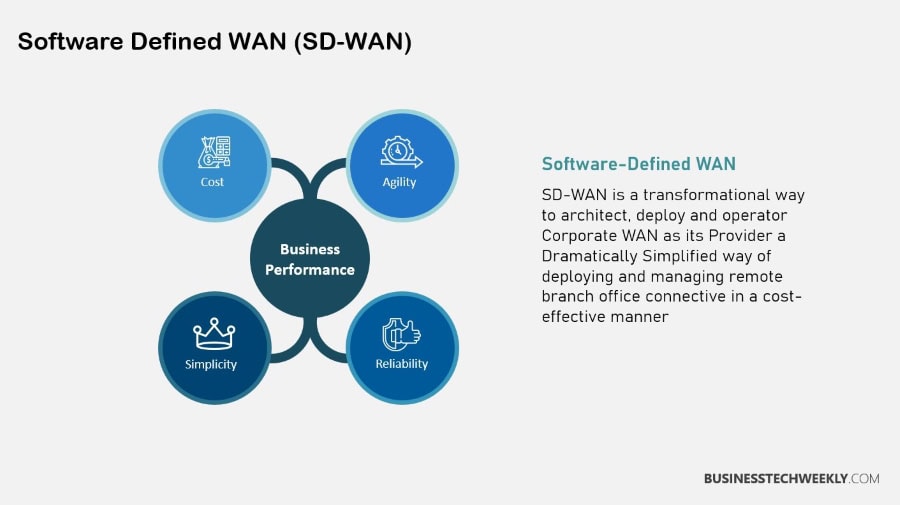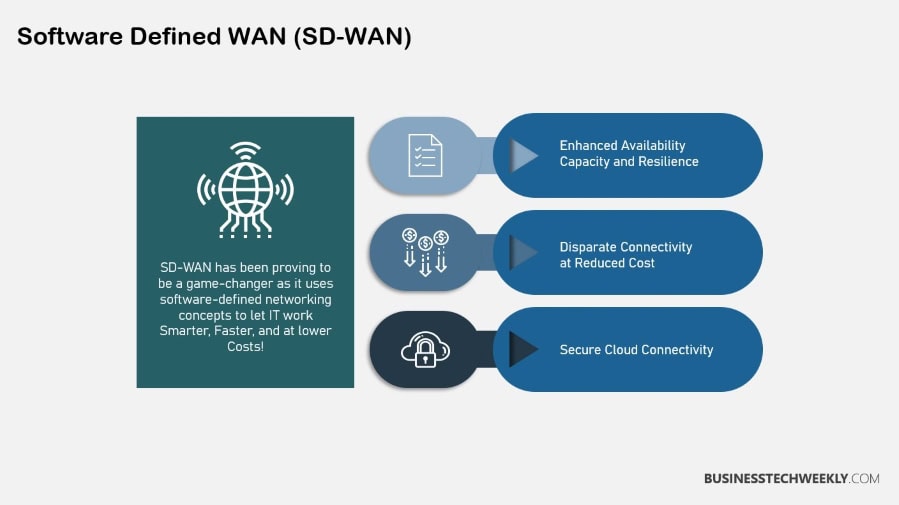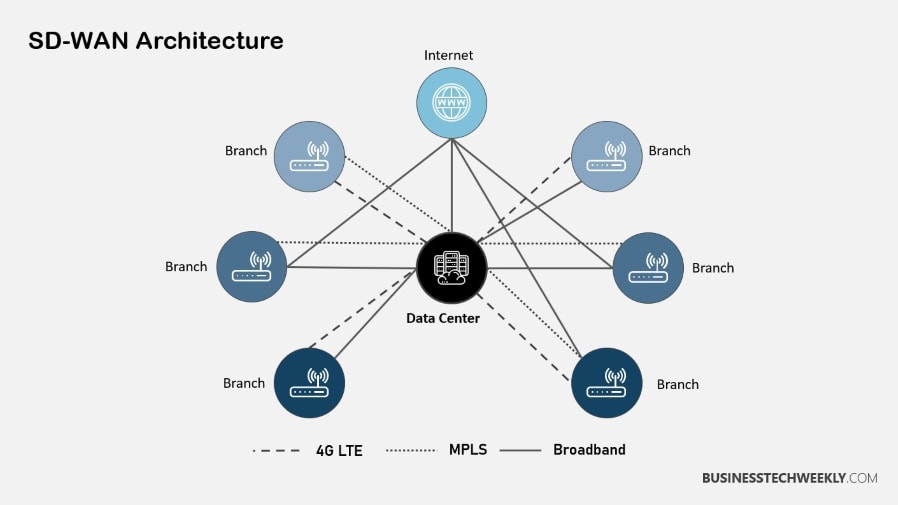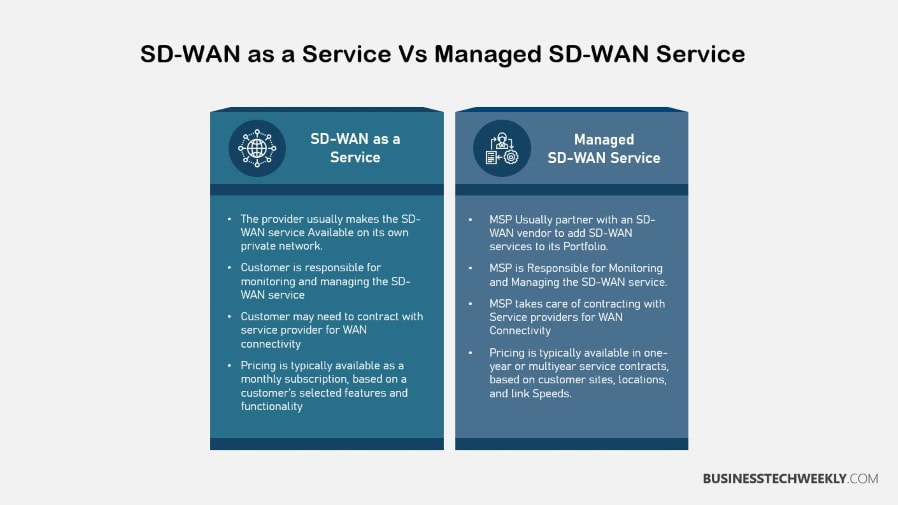SD WAN Security: Your Guide to Understanding SD WAN Security Essentials

On this page:
What is SD WAN Security?
SD-WAN security is integral to operating secure wide-area networks. It combines incorporating different security technologies and practices to secure WAN connectivity.
This tight integration is a key design principle.
It ensures that every connection and data transfer is always secure. SD-WAN can operate on top of any network infrastructure, improving security posture by layering in security capabilities on top of legacy networking models.
IPsec encryption is the basis of securing both on-premises WAN access and DIA. It also keeps you compliant with all of the standards you need to be held to. SD-WAN leverages access controls to determine who is able to access sensitive parts of the network.
This approach increases defense against unwanted attacks.
Microsegmentation is another key element, enabling precise secure isolation within the network to protect the assets that matter most.
SD-WAN can reduce the amount of network hardware needed by at least 50%.
Importance in Modern Networking
So as you can see, there’s a lot that’s making SD-WAN security critical to today’s networking environment.
As enterprises continue to migrate to cloud-based environments, securing sensitive data takes on even greater importance.
SD-WAN security also enhances business continuity and resilience by keeping data and applications secure, no matter how distributed the environments get. The growing threat landscape requires advanced security approaches.
These types of attacks have taken a tremendous financial toll on businesses. They illustrate the dire need for robust solutions such as SD-WAN, which has security at its core.
Secure Access Service Edge (SASE) models are all the rage. They integrate network and security functions together into a single, cloud-delivered service.
Quickly deploying security Branch offices and roaming users are some of the most vulnerable to cyber threats. This danger exacerbates as they continue to do so with greater focus on Direct Internet Access (DIA).
AI-powered SASE takes this a step further by delivering a more adaptive security model that’s constantly evolving to keep pace with new threats.

Key Security Challenges in SD-WAN
Yet, in deploying SD-WAN solutions, organizations can find themselves faced with key security challenges that can prevent networks from being adequately secured.
While SD-WAN solves many networking challenges for remote, edge and branch sites, it also brings a host of new security challenges.
These limitations are compounded by a lack of visibility into traffic flow and the challenge of ensuring uniform policy enforcement in increasingly diverse network landscapes. With the dynamic nature of modern networks, compounded by cloud services and mobile users, securing these systems becomes increasingly complex.
MPLS still has some traditional advantages, particularly around highly focused troubleshooting and end-to-end managed control. It’s these same benefits that complicate SD-WAN security considerations.
Traffic Flow Visibility Issues
Complete visibility into all traffic patterns is necessary to identify advanced threats and detect anomalies. Without it, organizations are leaving themselves open to unauthorized security risks and vulnerabilities that could go unnoticed.
When security teams are unable to effectively monitor and analyze traffic, they lose out on key indicators of possible threats.
This lack of visibility is responsible for approximately 80% of breaches or failed audits. Most of these breaches were entirely avoidable with a software patch or reconfigured device in a timely manner.
To improve traffic visibility, organizations can invest in innovative solutions and deep visibility strategies like AI-powered analytics and real-time monitoring platforms.
These solutions offer increased visibility across all network activity, enabling organizations to detect and respond to threats earlier in the attack lifecycle, before they can do any damage.
Consistent Policy Enforcement Complexity
Enforcing security policies consistently across hundreds, or thousands of locations and devices can be a daunting task. Without consistent policy application, security gaps will naturally occur—making networks unprepared for the next attack.
The complex and varied environments of SD-WAN networks create a challenge in ensuring a unified security posture. Policy management needs to be simplified. Centralizing these management systems can help automate policy enforcement and drive consistency.
This consistent method greatly minimizes the dangers associated with security holes. It gives organizations the control they need to secure their networks in a smarter, more targeted way.
Scaling Security with Network Growth
As organizations branch out and deploy larger and more complex networks, the necessity for scalable security solutions becomes critical.
For example, accelerating network expansion in the absence of proper security controls can create high risk gaps.
According to a recent report by Fortune Business Insights, the CAGR of SD-WAN adoption is projected to reach 26.2% from 2022-2028. This phenomenal growth emphasizes the importance of having robust security solutions.
To effectively embed security into increasingly distributed SD-WAN infrastructures, use solutions that deeply integrate with the SSE architecture. This helps ensure a complete security posture.
Continuously iterating on SD-WAN security features is key to addressing new and evolving threats. This proactive approach means that as your network expands, its security won’t take a hit.

Security Measures in SD-WAN Architecture
The network security landscape has changed dramatically.
To protect against emerging threats, organizations should take a comprehensive approach to infuse security measures directly into the SD-WAN architecture. Encryption, firewalls, and access controls make up the core of these security measures.
Each one contributes distinct advantages that increase the overall security of the WAN ecosystem.
|
Security Measure |
Description |
Benefits |
|---|---|---|
|
Encryption |
Protects data in transit |
Ensures confidentiality |
|
Firewalls |
Filters incoming and outgoing traffic |
Prevents unauthorized access |
|
Access Controls |
Manages user privileges |
Limits access to sensitive data |
1. Data Plane Security Techniques
Security measures to protect data in motion on the data plane. This is where encryption comes into play, protecting data in-transit by keeping it confidential and verifying it has not been modified or tampered with.
To add security to the data plane, use highly encrypted protocols. Plus, continuously manage and update your security measures to address emergent vulnerabilities.
2. Control Plane Protection Strategies
The control plane is the brain of the SD-WAN architecture, and securing it is of utmost importance. To protect against unauthorized access, use secure authentication measures.
Improve integrity and confidentiality by implementing security measures such as IPsec. These measures help ensure that control plane communications are secure, trusted and available.
3. Integration of Advanced Features
Embedding advanced security features such as cloud access security brokers (CASB), next-generation firewalls (NGFW), and more into secure networking solutions like SD-WAN provides tremendous value.
Features such as threat intelligence and anomaly detection enhance security by detecting and addressing possible threats in real-time, addressing significant security challenges effectively.
When evaluating security vendors, consider those who offer comprehensive security features that protect against sophisticated attacks, ensuring a robust network security strategy.
4. Role of IPsec-based VPNs
IPsec-based VPNs are essential to securing SD-WAN connections. These VPNs provide benefits including encrypting data in transit between branch offices and corporate data centers to help protect sensitive information.
Best practices for deploying IPsec VPNs involve configuring them to align with organizational security policies and regularly reviewing their effectiveness.
5. Microsegmentation Benefits
Microsegmentation improves security by isolating sensitive network segments, reducing the attack surface and stopping lateral movement.
This core SD-WAN security element dynamically prioritizes all network traffic, making sure that even the most dangerous threats are kept in-house and dealt with.
We do recommend microsegmentation as one component of a multi-faceted security approach.
6. Next-Generation Firewalls (NGFW) Usage
NGFWs (next-generation firewalls) are part of the core security in SD-WAN architecture, delivering features like advanced threat protection and network visibility.
NGFWs further improve security measures by allowing for more granular traffic filtering, including by application, user, and content. By integrating NGFWs into SD-WAN solutions, your organization will have a strong layer of protection against today’s more sophisticated threats.
RELATED: Firewall Best Practices Business Must Adopt

Enhancing SD-WAN Security with Technology
These emerging technologies are having a significant impact on improving the security of Software-Defined Wide Area Networks (SD-WAN).
These advancements are key to improving cyber security posture while combating the dynamic and ever-present threat of cyber attacks.
By marrying SD-WAN with leading-edge security solutions, organizations can gain the peace of mind they seek. This protects their branch locations from both physical and virtual threats. Technologies such as zero-touch provisioning remove human error from the equation.
Third, they automate the application of security policies with no human intervention to each SD-WAN device, saving time, and ensuring consistency across devices.
AI’s Contribution to Security Improvement
It’s not a surprise that artificial intelligence is one of the primary drivers for making SD-WAN security better, namely, by increasing threat detection and response capabilities.
AI-driven analytics not only streamline the process of identifying anomalies and potential threats, but they also implement a far more proactive approach to security.
This technology leverages AI and machine learning to automate security processes. In turn, it increases productivity while also increasing the effectiveness of threat responses. AI tools enable companies to quickly scale their operations.
They further automate and orchestrate complicated functions, which make them indispensable to a forward-looking security posture.
SASE’s Role in Strengthening Security
Secure Access Service Edge (SASE) technology is another innovative framework that has grown increasingly applicable to SD-WAN security.
With SASE, networking and security functions are combined into a single architecture, offering holistic protection for enterprises.
By embracing SASE, businesses are better prepared to deploy all-encompassing security, guaranteeing not only the best performance but also greater operational efficiency.
The combination of Secure Web Gateways (SWGs), next-gen firewalls, and unified threat management (UTM) capabilities further increase the security of SD-WAN.
This enhancement also makes hybrid WAN configurations possible, which can accept multiple connection types.

Best Practices for Managing SD-WAN Security
Achieving powerful SD-WAN security requires adherence to a core set of best practices, making a unified security strategy a top priority.
This includes routine audits and updates, which are essential for maintaining a secure network environment. By implementing a comprehensive security strategy, organizations can effectively address significant security challenges.
Regular audits play a crucial role in identifying vulnerabilities and outdated components. Timely patching or configuration updates can prevent nearly 8 in 10 breaches.
Furthermore, keeping your SD-WAN updated ensures that the latest security protocols and features are utilized, enhancing overall security functionality.
This critical first step not only establishes a strong SD-WAN security posture but also significantly reduces risks, paving the way for a robust network security strategy.
Centralized Management Strategies
Centralized management is a key foundational element for managing SD-WAN security, delivering a unified, high-level view of the complete network. This method simplifies policy enforcement and monitoring.
It provides a centralized, single pane of glass view to remotely manage and update device software.
Tools such as centralized SD-WAN management platforms are indispensable, as they centralize control, simplify processes and dramatically increase visibility.
Most importantly, they provide granular, highly scalable control over security policies across multiple sites, creating consistency where possible and simplifying complexity where applicable. When you integrate these tools into your SD-WAN infrastructure, it greatly enhances the efficiency of security management.
Effective Policy Enforcement Methods
Putting in place smart policy enforcement practices will go a long way toward keeping your SD-WAN secure. Automated policy enforcement plays a major role in this strategy, reducing human error and guaranteeing uniform security practices.
Having these policies is one thing, but regularly reviewing and updating them is just as crucial. Automated tools can help you achieve this, making sure your security posture adapts with new technology and new threats.
This strategy does more than just strengthen your network, it ensures your broader security ecosystem remains effective, adaptable and focused on your organization’s objectives.
RELATED: Considering Managed SD-WAN? Here is what you need to know
Scaling Security with Network Expansion
As your organization continues to expand its network, flexible security solutions are essential.
Proactively embedding security into new network segments and locations is no longer just a best practice, but rather a strategic imperative to ensure continued strong protection.
By implementing best practices such as secure out-of-band management solutions, you’ll maintain 24/7 monitoring and control.
These solutions add a layer of security by delivering dedicated, encrypted access to remote infrastructure.
Staying secure as you scale IPsec should be the foundation of any SD-WAN deployment to ensure secure traffic over any public internet connection.
Third, an enterprise-class, secure SD-WAN solution must be hardware-based security features such as TPM, encryption modules, and onboard firewalls.
These features ensure complete security as you grow.
Evaluating Next-Generation SD-WAN Solutions
As you evaluate next-gen SD-WAN solutions, make security a top consideration. Prioritize security to ensure your network is protected from threats, and look for solutions that include strong security features, like Zero Trust security, which SASE solutions provide.
When reviewing vendors, look for those who have a track record of releasing security patches and keeping all WAN routers in a well-supported state. Perform deep due diligence to ensure the selected solution is in keeping with your organization’s security goals.
This will give organizations strong protection through best-in-class third-party integrations.
Frequently Asked Questions
What are the key security challenges in SD-WAN?
These significant security challenges stem from managing and implementing security protocols, achieving consistent policies, and most importantly, visibility over all network segments, which is essential for a comprehensive security stack.
What security measures are used in SD-WAN architecture?
SD-WAN architecture employs a variety of approaches, including encryption, firewalls, and intrusion detection systems, as part of a comprehensive security stack to protect sensitive data and ensure that only authorized personnel access the network.
How can technology enhance SD-WAN security?
Powerful technologies such as artificial intelligence and machine learning massively increase SD-WAN security solutions.
They proactively predict security threats, automatically respond to them, and provide greater visibility across the entire network.
What are the best practices for managing SD-WAN security?
Cybersecurity best practices like regular security audits, maintaining up-to-date software, and training staff can all be done in-house.
Together, these actions keep your SD-WAN environment healthy, flexible, and secure.
How do SD-WAN security solutions compare?
SD-WAN security solutions differ in areas such as functionality, expense, and scalability, which are significant security challenges.
It’s also important to compare these options with the specific security needs of the organization to ensure you’re getting the best security.
Why is SD-WAN security important?
SD-WAN security is critical to protecting sensitive data and ensuring network availability, addressing significant security challenges while preventing compliance breaches.
It’s enabling enterprises to better protect their most valuable digital assets with enhanced security.

